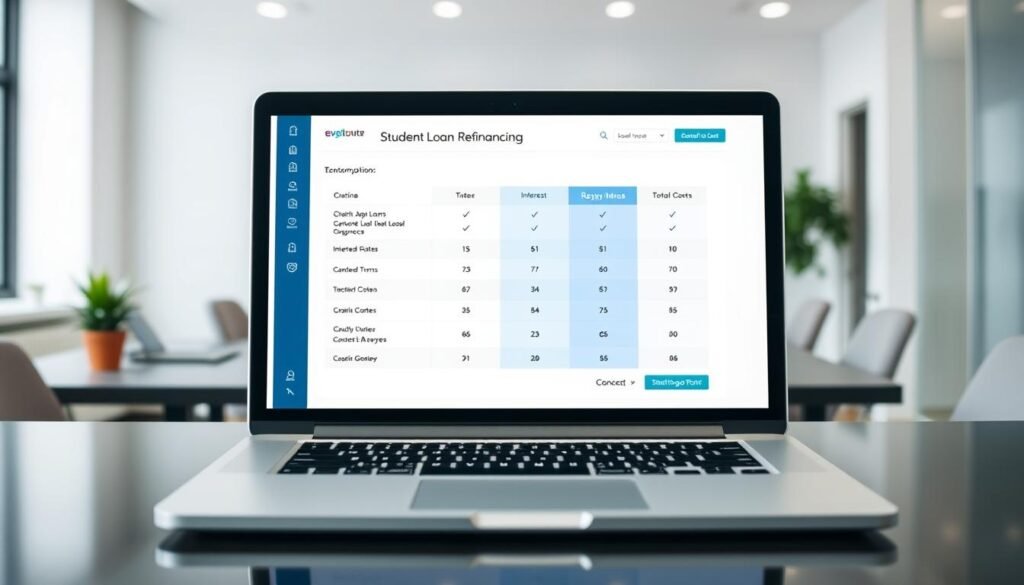
Refinance Your Student Loans as an International Graduate in Canada

Surprising fact: when you apply for a study permit you must show tuition plus about $10,000 per year for one person a rule that shapes the total cost of your time at a university and affects every borrowing choice.
If you live and study in a new country, you need a clear, friendly roadmap to decide whether refinancing or taking a new loan is smarter for your situation. This short guide shows what lenders and your school will expect, and how your status ties into costs by year.
You’ll learn how loans fit with grants, family support and financial aid so you can plan payments and avoid surprises. You’ll also see why options differ for canadian citizens and for those without federal access, plus how a comparison tool can help.
Start by connecting with your university financial aid office and check resources like StudyFinance to compare offers, read terms, and weigh total cost not just monthly payments.
- Understanding refinancing for international graduates in Canada right now
- student loan refinance international graduates Canada: eligibility, lenders, and what to expect
- How to compare and secure better terms: rates, repayment, and total cost
- Pathways and edge cases: private student loans in Canada and cross-border refi options
- Next steps to move forward with confidence
Understanding refinancing for international graduates in Canada right now
Your choice should match the timing of your program, IRCC proof-of-funds needs and what your school can certify. Pick the path that lowers cost or improves flexibility without creating eligibility gaps.

Refinancing versus new private student loans: what’s the difference?
Refinancing replaces an existing obligation with a new one to cut interest, extend repayment, or remove a cosigner. A new private student loan adds fresh funding for upcoming tuition fees and living costs.
How IRCC proof-of-funds and university financial aid policies affect your options
IRCC expects proof of tuition plus roughly $10,000 per year for living costs. That upfront rule matters even if you plan to rely on private funding later.
The financial aid office certifies cost of attendance. Their figures cap how much lenders will approve and show which grants scholarships will reduce what you need to borrow.
Cosigner-free lending and credit history considerations for international students
Some lenders at select schools offer cosigner-free options. They focus on program, expected graduation date and career path rather than prior credit history.
"Lenders sometimes prioritise academic progress and future earnings over short credit files."
- Refinancing can lower rates or remove a cosigner once you have stability.
- New private funds cover tuition fees, accommodation and books ahead of term start.
- Talk to your university financial aid office early to align timelines.
| Option | When it helps | What to watch |
|---|---|---|
| Refinancing | After graduation or improved earnings | Fees, cosigner release terms |
| New private student loans | Pay upcoming tuition fees and living costs | Disbursement timing, school certification |
| Cosigner-free options | At select schools with strong programs | Academic record, expected graduation date |
student loan refinance international graduates Canada: eligibility, lenders, and what to expect
Knowing which programs and lenders support your profile makes applying far less stressful.

Who may be eligible: graduates of Canadian universities and status considerations
You may eligible if you finished a qualifying program at an approved university and can show a clear graduation year and program record.
Your current immigration or work status affects options. Canadians at approved schools sometimes access extra private choices, while other applicants follow lender-specific routes.
What lenders look at
Most lenders serving international students in Canada work from an approved school list. They check:
- Academic success and grades.
- School or university reputation and program type.
- Expected graduation year and career path.
- Home country and any available credit history.
How much you can borrow: education loans typically cover up to the university’s certified cost of attendance minus scholarships and awards. Disbursement usually goes directly to the school.
| Step | What lenders check | Timing |
|---|---|---|
| Precheck | Approved schools list, program eligibility | Weeks before application |
| Documentation | Grades, graduation year, awards, status | Provide with application |
| Approval & disbursement | Underwriting, credit/history where available | Funds sent to university after approval |
Timing tip: you can pursue loans international in your final year for tuition, or wait to assess refinancing once your income is steady. Keep records tidy to speed approval.
How to compare and secure better terms: rates, repayment, and total cost
Start by comparing offers side‑by‑side so you can see true total cost, not just monthly payments. Use a loan comparison tool to verify whether your school is approved and to filter lenders by rate and service.

Using a Canada student loan comparison tool to find approved universities
You can run a quick student loan comparison online to find approved universities, shortlist lenders, and start an application in minutes. After review, offers show your interest rate and amount; approved funds go straight to your university, usually in about six weeks.
Interest types, fees, and repayment terms to watch
Compare fixed versus variable interest rate offers. Fixed gives predictability; variable may start lower but can rise.
- Check origination, early repayment, and late fees.
- Read amortization details and in‑school interest options.
- Confirm repayment terms and any deferment rules.
Borrowing limits and timeline
Your university’s financial aid office certifies the cost of attendance. Borrowing limits usually equal that figure minus scholarships and awards, and cover tuition fees and eligible living costs.
Plan for a typical six‑week application-to-disbursement window. Gather documents early so school certification and underwriting don’t delay your term.
| Item | What to check | Why it matters |
|---|---|---|
| Rate type | Fixed or variable | Changes lifetime interest |
| Borrowing cap | Cost of attendance minus awards | Limits how much the lender will approve |
| Disbursement | ~6 weeks after approval | Aligns with academic calendar |
Building credit while protecting your cosigner
Make on‑time payments when possible to build strong credit history. Small early payments or shorter terms cut long‑run interest and help you qualify for better offers later without a cosigner.
"A clear comparison of price and service helps you pick an offer that fits your budget and goals."
Pathways and edge cases: private student loans in Canada and cross-border refi options
When your academic record and program signal strong earning potential, some lenders will skip a domestic guarantor. This opens a clear path at select universities where the lender weighs grades, expected graduation and career plan over credit history.
Private options without a cosigner: how they work
At approved schools you may eligible for a no‑cosigner private student loan if your program and transcript show strong prospects. Funds typically cover tuition, housing, food, insurance and books.
Application needs school certification and documentation. After approval, disbursement usually goes to the university in about six weeks.
Cross‑border refinancing for borrowers who move to the U.S.
MPOWER Financing offers a program that can refinance up to $100,000 of education loans from global lenders. It may release cosigner or collateral obligations, lower your interest rate and help build U.S. credit history.
- Eligibility requires at least three months of work experience and valid U.S. work authorization (like OPT or H‑1B).
- Compare repayment terms and currency effects before you commit.
"Check lender requirements and timing so servicing, interest and repayment terms match your career and residency plans."
Next steps to move forward with confidence
Start simple: use a Canada student loan comparison tool to check if your school is approved and build a shortlist of lenders that match your timing.
Contact your university financial aid office to confirm the certified cost of attendance. That figure sets the borrowing cap (cost of attendance minus grants and scholarships) and aligns requests to tuition fees and allowable expenses.
Prepare documents passport, permit, program details, awards and work info so students apply smoothly. Compare at least two offers side by side using a loan comparison checklist. After review, lenders will show interest and amount; approved funds usually disburse about six weeks to your university.
Plan payments to build credit history, stack savings and grants first, then use private student options to close the gap. Decide whether to refinance or keep your current loan based on flexibility and your income outlook.
If you want to know other articles similar to Refinance Your Student Loans as an International Graduate in Canada you can visit the category Loans.






Leave a Reply